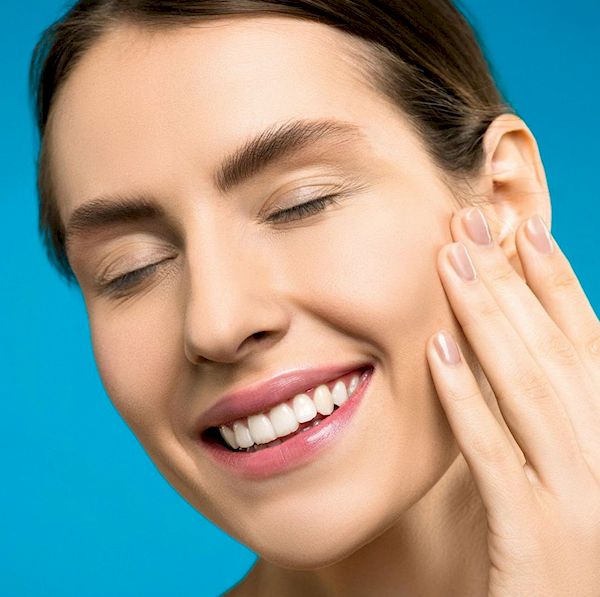- At the clinic's price without markups
- with full doctor support
Not so long ago, people couldn’t even imagine the possibility of the birth of veneers. We all used to think that to renew the appearance of teeth, it was necessary to drill, remove, or replace them with prosthetics, crowns, or even dentures. Moreover, when it gained popularity, many thought it was impossible to implement veneers or, at least, that it was too expensive. Now, you may not be afraid of getting dental veneers, especially in Turkey — just keep reading.
Thinking about a prettier smile without a five-figure bill? Turkey veneers turned into the preferred choice for those who want premium cosmetic dentistry at up to 70% below US or UK rates. Istanbul and Antalya clinics bundle CAD/CAM (Computer-Aided Design and Computer-Aided Manufacturing)-milled porcelain with hotel stays and airport shuttles, turning a dental chore into a week-long city break. Keep reading to discover how much veneers cost in Turkey, what drives the price, and how these ultra-thin shells can reshape your mouth line rapidly.
Turkey’s Rise as a Global Aesthetic Dentistry Hub
Turkey has emerged as a premier destination for cosmetic dentistry, especially veneers. As a matter of fact, Turkey is now considered to be among the most renowned dental centres in the world, attracting thousands of foreign patients annually who seek excellent but reasonably priced care. This popularity stems from a unique combination of factors: experienced doctors (due to the huge flow of foreign patients), innovative technologies, and a high level of service (including multilingual staff and interpreters for clear communication). Consequently, patients can get excellent results at a fraction of the cost found in the UK or US — often 70% less for veneer packages. Reputable sources note that from Istanbul to Izmir, Turkey, is “the capital of high-quality, affordable dentistry,” home to best-in-class dentists and state-of-the-art clinics. Consider this fairy tale: patients can turn their “Turkey teeth” journey into a holiday, as dental treatment can be seamlessly integrated with tourism, thanks to Turkey’s developed infrastructure and resort attractions.
What are dental veneers, and how do they change the appearance of the smile line?
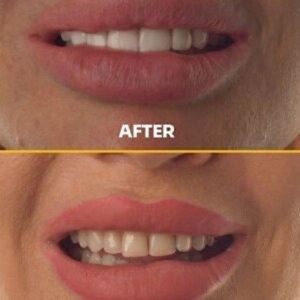
Veneers fill smaller spaces or rectify slight crowding without the need for braces. They clarify the worn or irregular incisal edge. What is the result? There should be a smoother mouth line that is convex to the lower lip.
Modern veneers are made of outer ceramic, but it is a replica of natural enamel translucency, so they reflect the light similarly to the actual tooth. The Hollywood smile — that’s how the veneer is often called, but it looks natural up close. Anyone can make it symmetrical and brighten it up in as few as five days, with chairside 3D scanning and in-house CAD/CAM milling.
The restoration was performed by Ertan Etemoglu, an experienced dentist from Istanbul.
Once familiar with the 2025 pricing landscape and veneer science, only the selection remains. Discover a convenient material and check the accreditation of a clinic prior to buying the ticket to Turkey.
How Much Do Veneers Cost in Turkey in 2025?
How Much Do Veneers Cost in Turkey in 2025?
|
Material |
Turkish price per single tooth (USD) |
Typical full package* |
US price per 1 tooth |
Savings |
|
Porcelain (standard) |
$180–350 |
16 teeth ≈ $3,200–4,800 |
$900–2,500 |
65–80% |
|
E-max lithium-disilicate |
$220–400 |
20 teeth ≈ $4,000–6,000 |
$950–2,800 |
60–75% |
|
Zirconia |
$250–450 |
20 teeth ≈ $4,400–7,200 |
$1,200–3,000 |
60–70% |
|
Composite |
$100–200 |
16 teeth ≈ $1,600–3,200 |
$400–1,500 |
55–70% |
*Packages typically include VIP transfers, panorama X-rays, digital smile designs, and four to five nights in a four-star hotel.
The price of a complete set of 20 porcelain/zirconia veneers is £3,000-£5,500 ($3,900-$7,800), which is still under half of what this work would actually cost in London or New York.
Factors that keep Turkey’s veneer prices low:
- Favorable exchange rate. A cheaper lira lowers fixed costs at the rate of the dollar or pound.
- Reduced laboratory costs. The EU- or US-qualified dentists are less well paid locally, yet have the same competency level, without any doubt.
- High patient volumes. Big stores can distribute lab and scanner over thousands of cases per annum, reducing the price per patient.
For travelers searching “how much do veneers in Turkey cost,” the short answer is satisfying: about one-third to one-quarter of Western prices, even after flights and hotels.
Veneer Price Menu: Types & Rates
Turkey can be regarded as a leader in terms of aesthetic dentistry, as this country is so fast to use the latest technologies and materials on veneers. Clinics in the dental field are continuously implementing new technologies to improve patient comfort and results. Good news: you will be surprised by the price!
The table below is a current market “rack rate” on the most popular veneer options that you will find in terms of Turkish clinic quotes. Panoramic x-rays, digital smile design, local anesthesia, two-chair, and hotel/transfer privileges are often such packages.
|
Material & Sub-type |
Typical cost per tooth |
Full set (20 teeth) |
Notes |
|
Feldspathic porcelain (hand-layered) |
$180 – $300 |
$3,600 – $5,800 |
Ultralight; suits minor shape fixes |
|
E-max lithium-disilicate (CAD/CAM) |
$220 – $400 |
$4,400 – $7,200 |
High translucency, glossy finish |
|
Zirconia (monolithic) |
$250 – $450 |
$5,000 – $8,800 |
Extra-strong for bruxism patients |
|
Composite resin (direct) |
$100 – $200 |
$2,000 – $4,000 |
Same-day option; 3–5-year lifespan |
All prices in US dollars, pulled from the four Istanbul and Antalya clinics’ 2025 lists.
Turkey vs The Rest: 2025 Cost Snapshot
|
Country |
Porcelain veneers per tooth |
Full E-max smile (20) |
Typical extras included |
|
Turkey |
$180–400 |
$4,000–6,000 |
Hotel, transfers, digital scan |
|
Spain |
$450–700 |
$9,500–13,000 |
Clinic pick-up only |
|
United Kingdom |
$950–1,500 |
$18,000–26,000 |
No travel perks |
|
United States |
$900–2,500 |
$20,000–35,000 |
No travel perks |
|
Thailand |
$350–600 |
$7,000–11,000 |
Hotel night + airport ride |
Even after airfare, Turkey veneers still land around one-third of London or New York totals. The margins are even pushed up on high-end products like zirconia, as labs in Turkey purchase blanks in large quantities and transfer the benefit. The cost of veneers in Turkey wins.
Porcelain vs. Zirconia: How Do They Differ?
Porcelain vs. Zirconia: How Do They Differ?
|
Feature |
Porcelain (E-max/feldspathic) |
Zirconia |
|
Translucency |
High; closest to natural enamel |
Moderate; newer “high-trans” blocks improve brightness |
|
Thickness needed |
0.3-0.5 mm |
0.5-1 mm (slightly bulkier) |
|
Flexural strength |
350-400 MPa |
900-1,200 MPa — roughly 3× stronger |
|
Best for |
Front-six “show” teeth, shade perfectionists |
Heavy grinders, deep bites, back-tooth veneers |
|
Prep style |
Minimal/no-prep possible |
Usually requires more enamel reduction |
|
Price in Turkey (per tooth) |
$180-400 |
$250-450 |
Porcelain veneers in Turkey come out on top on the life-likeness of the sparkle; zirconia on brute force. When you grind or clench during the night, it is known to dentists as bruxing; zirconia can outlast porcelain by years. When it comes to pure cosmetic cases where translucency is more important than mega-strength, go with a high-grade E-max.
Special features of Porcelain Veneers

- Durability: lab tests place high-strength porcelains at 350–400 MPa flexural strength — imagine biting into an apple with confidence.
- Shade stability: tea, coffee, and red wine roll off the glazed surface, so color drift is minimal over ten years.
- Biocompatibility: the ceramic is inert, so that no metal ions or taste changes.
E.max porcelain veneers (lithium disilicate glass-ceramic) are another presentable material widely used in Turkey. E.max veneers are valued for their superb translucency and natural appearance — “the clarity and colour rendering of E-max veneers perfectly mimic natural tooth enamel”. They achieve a very lifelike result and can be made as thin as 0.3–0.5 mm while still being strong after bonding. Many Turkish dentists prefer E.max for upper front teeth veneers due to its aesthetic appeal. They mostly use zirconia for cases needing extra strength (or for full crowns on back teeth). Importantly, clinics source these materials from top manufacturers under strict quality control.
Need a quick smile trial? Keep reading! Clinics often 3D print a translucent mock-up you can “test” before committing, which is rarely offered in smaller markets.
3D Print for your Dental Veneers
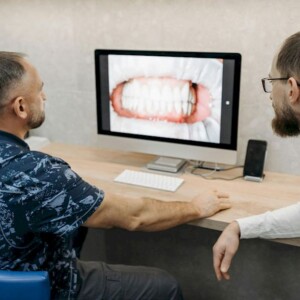
Esnan Dental Clinics (Istanbul) — A famous dental hospital group in Istanbul, “recognized as the best dental clinic in the capital and one of the leading in the country,” accredited to ISO 9001 quality standards. It specializes in all modern dental services, with particular strength in cosmetic treatments.
A hallmark of Esnan’s workflow is its emphasis on digital smile design: before a veneer or “Hollywood Smile” procedure, patients receive a full 3D digital modeling of their future smile. This allows one to visualize results, but that’s not all. The dentist can tailor the plan — choosing the most suitable solution — e.g., porcelain veneers, ultra-thin lumineers, or other restorations for optimal aesthetics. Advanced diagnostic imaging (panoramic and 3D CT scans) is used to guide treatment with high precision. Esnan’s dentists leverage technologies like laser dentistry (for minimally invasive gum and implant surgery) and strict sterilization protocols for safety.
Other prominent Turkish experts: Dr. Aylin Turan, and Dr. Emin Savaş — these are vetted for credentials and expertise. Experts Medical always confirms that doctors have proper diplomas, utilize modern dental technologies, and employ the highest-quality materials (from leading global manufacturers, FDA-approved). This vetting process means patients can trust that their Turkish cosmetic dentist meets high international standards of quality.
Which Veneers Are Best and Why?
Which Veneers Are Best and Why?
There isn’t a unique champion; the “best” veneer is the one that matches your bite forces, aesthetic goals, and budget.
|
Need |
Best choice |
Reason |
|
Photo-shoot translucency |
E-max porcelain |
Glass-ceramic scatters light like enamel, so the edge glows naturally in selfies. |
|
Heavy night grinding |
Full-contour zirconia |
3× stronger than glass-ceramic; less chipping under load. |
|
Minor shape tweaks on a low budget |
Direct composite |
Same-day placement, half the lab cost; easy to repair. |
|
Tiny lateral incisors, no drill wanted |
No-prep feldspathic |
Only 0.3 mm thin — the dentist may not touch a bur to the enamel. |
The majority of travelers choose E-max in the front ten so-called selfie teeth, followed by zirconia on the premolars to manage chewing forces, which is a combination that maintains the smile bright and long-lasting.
The Veneer Procedure, Step by Step
1. Digital Planning
A 3D model is created with an intra-oral scanner; the software shows how the tooth width, length, and your new smile curve will be.
2. Tooth Preparation
The dentist takes away 0.3-0.5 mm of enamel (or does not drill in no-prep cases).
3. Temporary Teeth (Provisionals)
Your prepared teeth are covered with a light-cured resin shell that allows you to test the form and keeps sensitivity off.
4. Lab Fabrication
Technicians mill porcelain, zirconia, or press lithium-disilicate and hand-stain to achieve realistic translucency.
5. Try-In & Feedback
Veneers are cemented in place using water-soluble gel to allow you to smile, speak, and view them in daylight. Minor modifications are sent back to the laboratory.
6. Final Bonding
The teeth are etched, primed, and the veneers cemented with dual-cure resin; excess cement is flossed away, and bite contacts are checked.
7. Photo & Bite Guard
Shade is recorded by a high-resolution photo; bruxers are given a clear night guard to cover the new work.
The Veneer Procedure, Step by Step
1. Digital Planning
A 3D model is created with an intra-oral scanner; the software shows how the tooth width, length, and your new smile curve will be.2. Tooth Preparation
The dentist takes away 0.3-0.5 mm of enamel (or does not drill in no-prep cases).3. Temporary Teeth (Provisionals)
Your prepared teeth are covered with a light-cured resin shell that allows you to test the form and keeps sensitivity off.4. Lab Fabrication
Technicians mill porcelain, zirconia, or press lithium-disilicate and hand-stain to achieve realistic translucency.5. Try-In & Feedback
Veneers are cemented in place using water-soluble gel to allow you to smile, speak, and view them in daylight. Minor modifications are sent back to the laboratory.6. Final Bonding
The teeth are etched, primed, and the veneers cemented with dual-cure resin; excess cement is flossed away, and bite contacts are checked.7. Photo & Bite Guard
Shade is recorded by a high-resolution photo; bruxers are given a clear night guard to cover the new work.
How Long Will You Need in Turkey for Veneers?
The majority of travelers make a reservation of seven days on land to do scanning, lab work, try-ins, and final bonding. A typical schedule:
|
Day |
What happens |
Time in the chair |
|
1 (Mon) |
Panoramic X-ray, consultation, digital scan, shade match |
60–90 min |
|
2 (Tue) |
Preparation of the tooth (where necessary) + temporary veneers |
90–120 min |
|
3–4 (Wed–Thu) |
The final shells are lab-milled or hand-layered, and no clinic visit is needed |
— |
|
5 (Fri) |
Under natural light try-in, bite check, photo review |
30 min |
|
6 (Sat) |
Final glaze, bonding, polishing |
60–90 min |
|
7 (Sun) |
Spare day for tweaks or Bosphorus cruise, then flight home |
— |
Express option: There are clinics that have their own CAD/CAM and finish E-max veneers in three full days, but you may need a cushion in case the shade does not match well in sunlight.
How to Take Photos for an Online Veneer Consultation
Clear photos can enable the dentist to make judgments regarding color, size of tooth, and the condition of gums, even before your foot lands in Istanbul. All you require is your smartphone and good daylight. These are our checkpoints:
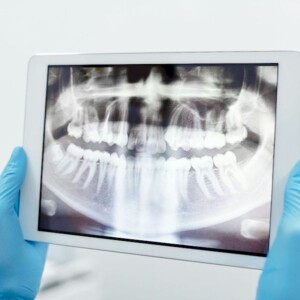
- Clean and dry teeth. Use a brush, floss, and then wipe your front teeth using tissue in order to maximize the reduction of glare.
- Stand against a window. True shade is seen using natural light, as much as possible, avoid overhead lamps, which give out a yellow hue.
- Neutral background. An empty wall prevents the phone from auto-darken the picture.
- Three angles:
- Relaxed, smiling straight on.
- Say -ah with an open, wide view (there are two lips that are apart, and the lip arches are visible).
- Profile symmetry: right and left 45° turn.
- Bite-down photo. Close the teeth softly and take a side picture; this shows overjet and overbite.
- Send on original letters. Send full-resolution files, not social-media-compresent X-rays, too, of course.
A quick, honest set of images speeds up your Turkey veneers treatment plan and may even let the lab start designing before your boarding on the plane.
Diagnostic Tests Performed in the Clinic
Get ready to have a complete work-up prior to any drilling, and be prepared that high-volume clinics are data-driven, not guesstimates.
Panoramic X-ray or CBCT. Checks the health of roots, the thickness of bones, and surprises such as cysts.
Intra-oral scan. Silicone molds are replaced; precision of 20 microns.
Bite analysis. Digital articulator maps pressure points to prevent future fractures.
Periodontal chart. Six-point probing around each tooth to rule out hidden gum disease.
Color calibration photo. A gray card alongside your teeth allows the lab to match shades regardless of whether the lighting is different.
Medical screening. Simple blood tests and, where necessary, INR or HbA1c tests to ensure safe recovery.
These tests add an hour or two to Day 1 but prevent mid-trip surprises — and they’re already baked into veneers Turkey packages quoted by Turkish clinics.
Photos submitted, materials selected, and lab schedule in hand, now you are ready to pass the final checkpoints: risks, longevity, and after-care. The latter follows.
What Are “Temporary Teeth,” and Why Do You Need Them?
Before the final veneers are placed, a temporary veneer installation is performed. Those thin plastic veneers that you slap on immediately after you have your teeth prepped? They are known as provisionals, and they are just temporary veneers. They can be customized in shape, length, color, and alignment, effectively concealing stains that whitening treatments cannot remove.
These provisional veneers protect your prepared teeth and allow you to experience the look and feel of your new smile while the permanent ones are being crafted in the lab. When installed:
- Avoid cold drinks, sweet foods, and the air on your dentin.
- Prevent your gums from slipping down into the prep areas.
- Allow you to take a test drive of the length your new veneers ought to be and how the shapes feel.
So when you feel something is chunky or the edges are clicking on your lower lip you can mention that to the dentist and the lab before the final fired-in porcelain is put down.
Lifespan of Different Veneer Materials
|
Material |
Service life Expectation* |
Important wear factors |
|
E-max porcelain |
15–20 years |
Acidic soda habits and night grinding |
|
Feldspathic porcelain |
12–15 years |
Breaking away hard foods |
|
Full-contour zirconia |
20–25 years |
Color gap may occur in the long run due to staining of neighboring natural teeth |
|
Direct composite |
3–5 years |
Staining of coffee, wear of surface polish |
*Presupposes flossing, biannual hygiene visits, and a protective night guard when you clench.
Takeaway: porcelain or zirconia are long-term, composite is a short-term, cheap solution that you can afford to redo in a couple of years.
Now, having the timing and the details of procedures and the differences in lifespan, you can plan your flights and hotel nights with no doubt and know exactly what is going to happen every day in Turkey.
Pros & Cons of Veneers — What They Can and Can’t Fix
|
Advantages |
Limits/Drawbacks |
|
|
What they solve |
Consider the stubborn-than-average stains you cannot remove after bleaching. And the little bit chipped off here, a small dent in an edge there, and those dreadful black triangles between the teeth. Perhaps your mouth is a little crooked and you cannot wear braces. Or again, your teeth may not be all the same height, so the entire line appears to be flat. |
— |
|
What they don’t solve |
— |
Severe crowding or cross-bite (requires orthodontics); Gum disease or decay that is not treated; Very dark root-canal teeth (can still be shadowed through); Uncontrolled tooth grinding which is not guarded. |
|
Upsides |
Just suppose: a brief visit to Turkey, in and out in a week. Qualified native dentists collaborate with a foreign clinic. They will provide you with porcelain/E-max veneers which look totally natural, they are of translucent nature. There is no numbing in the front teeth when it comes to no-prep cases heck. Best part? The color does not fade away within a decade. |
— |
|
Downsides |
— |
Removal of enamel on prepared teeth, which is irreversible; Potential short-term cold hypersensitivity; After 15-20 years needs to be replaced or refreshed; Front end cost vs. bonding or whitening. |
Day-to-Day Care After You Get Your Dental Veneers Turkey
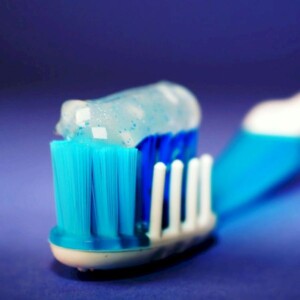
- Brush twice with a soft bristle and low-abrasion paste; skip charcoal powders.
- Floss daily. Slide floss out, don’t snap up — this avoids dislodging edges.
- Night guard if you clench. Clear acrylic shields porcelain from micro-cracks.
- Skip nut cracking. Use molars, not veneered incisors, for hard foods.
- Six-month cleanings. The hygienist polishes with non-acidic paste and checks margins for a glue line stain.
- Coffee & wine? Drink through a straw for the first week; after that, glaze resists most staining, but the natural teeth next to veneers can still darken.
Following those six simple habits and using high-grade porcelain or zirconia should keep your smile glossy for many years.
How to Pick a Good Veneer Clinic in Turkey
|
Check |
|
|
Dentist’s resume |
Look for postgraduate training in prosthodontics or cosmetic dentistry and membership in AACD or ESCD. |
|
Digital smile design |
A 3D mock-up shows the final tooth length on a photo of your face; no surprises on Day 5. |
|
Before-and-after gallery |
High-resolution, same-lighting photos prove real cases, not stock images. |
|
Warranty terms |
Reputable practices offer 3–5 year chip-or-debond repairs if you follow care rules. |
|
Reviews on neutral sites |
Look beyond the clinic’s feed — Google Maps and dental forums reveal consistent patterns, good or bad. |
If you can’t tick at least four of those boxes, keep looking.
Risks & Precautions
Sensitivity
usually fades in two weeks; fluoride gel speeds relief;
Color mismatch
fixable at the try-in stage; insist on seeing veneers in daylight;
Gum irritation
improper fit traps cement; a quick polish cures it;
Debonding
rare with modern adhesives, but a night guard cuts the risk further;
Irreversibility
once enamel is trimmed, you’ll always need a veneer or crown on that tooth.
Good planning and an experienced lab cut most of these risks to rounding-error levels, but it’s still surgery on your mouth — know the trade-offs.
Quick-Fire FAQ
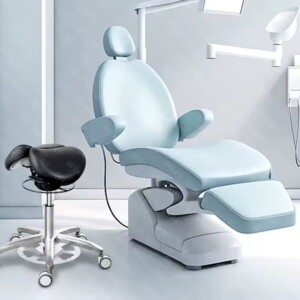
Prep is done with local anesthetic; bonding day is a long manicure — no drilling.
How much visitation is required?
Two chair appointments and a thirty-minute try-in. Three revisions should be made.
Does it have the option of whitening the veneers in the future?
No. Porcelain color is fired in. In case the surrounding natural teeth become whiter, then the shade of the veneer can be altered.
Will they be insured?
Rarely ever, veneers are optional makeup. In the US, a few plans cover trauma-related repair at a small cost.
Is it possible to consume steak and apples?
Yes, but it has to take 24 hours to set the cement. Bite apples on the sides of your teeth, and not on their very tops.
Veneer or crown?
When over half of the tooth is being filled, then a crown is preferred, but in other cases a veneer would preserve enamel.
With pros and cons weighed, care rules clear, clinic-hunting tips in hand, and common doubts answered, you have the full picture to decide whether Turkey veneers are truly the right route to your next-level smile.
Sources:
- https://pubmed.ncbi.nlm.nih.gov/33807504/
- https://www.nhs.uk/live-well/healthy-teeth-and-gums/dental-treatments/
- https://www.mouthhealthy.org/all-topics-a-z/veneers/
- https://www.who.int/news-room/fact-sheets/detail/oral-health
- https://khgmfinansalanalizdb.saglik.gov.tr/TR-40231/fiyat-tarifeleri.html





